Many managers and business owners fail to develop an internal communications strategy. This might not be an issue for a small team where everyone has a similar understanding of what is expected. However, as a company grows, developing a coherent internal communication strategy becomes more important.
Without a clear internal communication framework, larger organizations risk facing inefficiencies, misaligned priorities, and even employee dissatisfaction. Miscommunication or lack of communication can lead to duplicated efforts, missed deadlines, or confusion about responsibilities, which ultimately affects a company’s performance and morale.
In this guide, I’m going to show you how to create a successful internal communications strategy in just a few steps. Before we get into that though, it’s worth briefly covering what internal communications are and why it’s so important for large firms to establish an internal communications strategy.
What is an internal communication strategy?
Internal communication, as the name suggests, is the transmission of information between people and departments in an organization. It takes place across all levels of a company.
A coherent internal comms strategy is particularly important for large firms with hundreds or thousands of employees. A clear internal communication strategy will help you share company goals, expectations, and successes. It is also an opportunity to increase employee engagement.
A clearly defined approach ensures that everyone within the company receives proper information on time. This creates transparency, develops employee trust, and helps avoid misunderstandings or double messages. Such a scenario might involve keeping team leaders up-to-date about company decisions to align all employees further and eliminate confusion or uncertainties over currently undertaken projects.
Internal communication is, rather obviously, the opposite of external communication. The graphic below illustrates some common communication channels for internal and external communications.
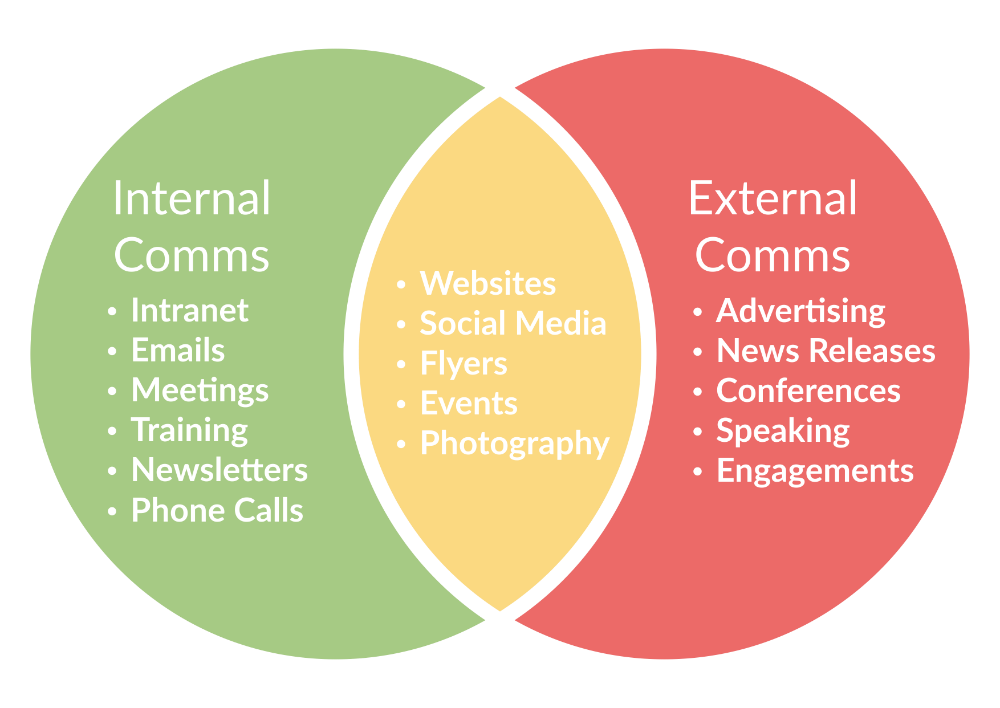 Effective communication is at the core of everything you do. It can help reduce conflicts between teams, help you keep your best staff, and improve productivity. For example, according to the McKinsey Global Institute, simply using a workplace social media platform can improve productivity by as much as 25%.
Effective communication is at the core of everything you do. It can help reduce conflicts between teams, help you keep your best staff, and improve productivity. For example, according to the McKinsey Global Institute, simply using a workplace social media platform can improve productivity by as much as 25%.
Along with improving productivity, internal communication strategies also play a critical role in employee retention. Clear communication fosters a sense of belonging and purpose; it shows employees that their voices are heard and valued. This holds particularly true for remote or hybrid teams: effective communication bridges the physical distance and keeps everyone connected to the company’s culture and mission.
Finally, an internal communication strategy is not just about what is communicated but also how it is done. The tone, cadence, and manner of communication can have quite an effect on how your employees will view the leadership and themselves in the corporation. A proper balance of formal updates and friendly, engaging content is critical in order to maintain trust and enthusiasm among your employees.
How to develop an internal communication plan in 7 simple steps
Your internal communication strategy needs to be unique to the needs of your company. However, it will draw from successful strategies used by established firms in your sector. So let’s have a look at how to develop a successful internal communication plan.
Step 1: review your current approach
Your first step is to review your current internal communication strategy. As part of this initial review, you should list the communication channels you use to communicate with colleagues. You should also consider how information is shared across your company both formally and informally.
Even if you have not formalized your internal communication strategy, there will be communication matrix you are using to communicate with colleagues working for the company.
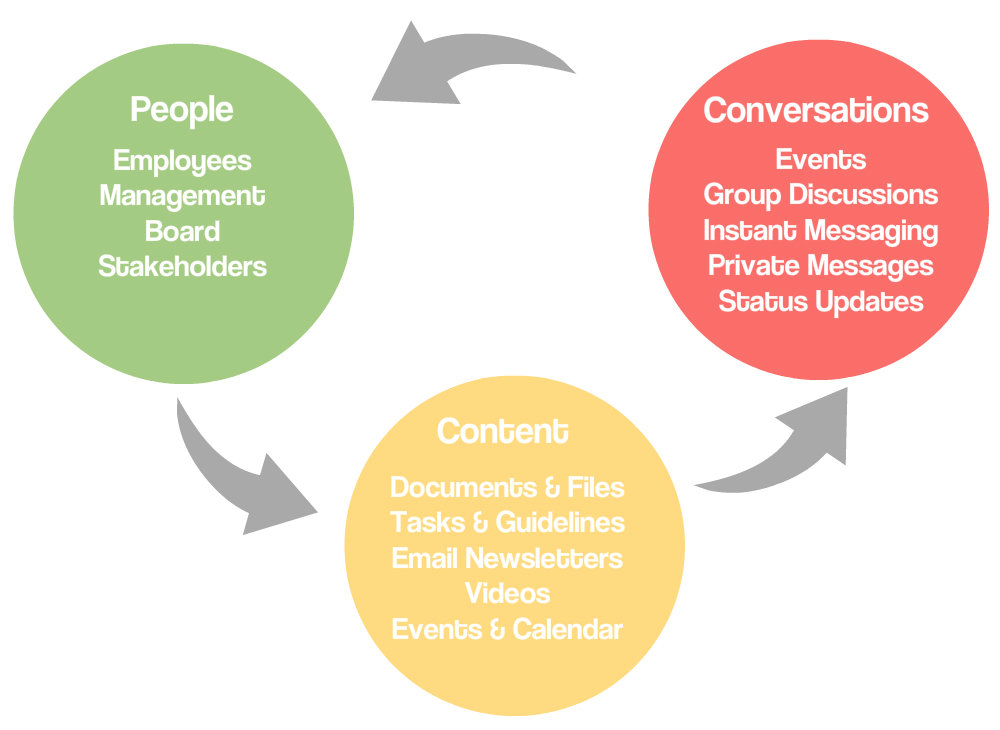 For a large organization, interviews with people from different departments could be insightful. For example, you might find out colleagues are using a communication channel you are unaware of.
For a large organization, interviews with people from different departments could be insightful. For example, you might find out colleagues are using a communication channel you are unaware of.
In addition to the things listed above, consider how your current strategy is performing, with particular reference to any pain points you can spot. Think about what’s going well, too. This internal communications strategy review will give you a baseline that you can work from.
If you want to upgrade your communications technology, you could look into buying an automated phone system. This can improve both your internal and external communication. You can also segregate your contacts into groups, so you can easily target your messages to members of your sales team or project managers
Step 2: choose your metrics for success
To assess the success of your internal communication strategy it is important to set some metrics for success. These will be your Key Performance Indicators (KPI). The metrics you choose will ideally be quantifiable.
You might choose to include some unquantifiable metrics. For example, you might want to improve the office culture, but this is a difficult metric to measure. If this is the case, you will have to use an unquantifiable metric to judge success.
Below are four common internal communication goals to consider when developing your strategy:
- Employee Engagement – Anything regarding how your employees engage with your messaging falls under this heading. This includes likes, reactions, and comments. Overall employee engagement metrics are also a good indicator of what materials are most useful to staff.
- Reduced Employee Churn – An effective internal communication strategy that addresses staff concerns could result in lower staff turnover. This could be measured by the HR Department.
- External social media metrics – If you’re using internal communications to foster employee advocacy, a good metric for success is improved social media metrics stemming from staff members sharing your content.
- General business improvements – Ideally as you roll out your new communications strategy, you should notice a decrease in project management issues. These could include a reduction in misunderstandings across different departments and improved efficiency.
Take care when setting the metrics of success for your internal communication strategy. For example, sharing the fact that likes and comments on an internal communication platform is important might cause your colleagues to be more active on the channel. However, this increased level of activity might have no benefit to the company.
Step 3: set goals and timelines
Just like developing a business strategy, it’s important to set clear goals and a timeline for success. The goals you set can be varied, but they should align with your business objectives.
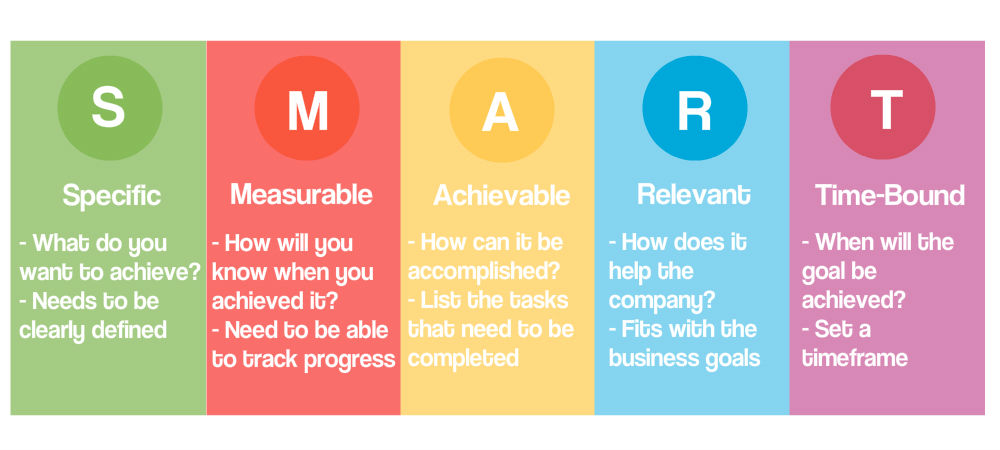 A good system to use when setting your goals is the S.M.A.R.T. framework. That is, your goals should be:
A good system to use when setting your goals is the S.M.A.R.T. framework. That is, your goals should be:
- Specific: you need to be clear on what you want to achieve
- Measurable: ideally the goal should be quantifiable so you can measure success
- Achievable: your goals need to be realistic
- Relevant: they should be relevant to your main business goals
- Time-specific: set a clear deadline or timeframe for when a goal should be reviewed or completed
This last point is perhaps the most commonly overlooked, but ignore timelines at your peril. They are essential for judging success.
While you can implement a new strategy overnight, some of your desired outcomes will have delayed reactions. For instance, it will take a certain amount of time for employee engagement with internal messaging to improve given that people need to respond to your new strategy.
Step 4: define and segment your audience
When developing your internal communication strategy it is important who your staff are. Not all of your employees alike, and they certainly don’t all need to see the same messages. An internal communication strategy that provides all employees with the same messages can bury critical information.
It’s important to segment your audience by department or job function. The information you send should be relevant to their needs. For example, you might decide to run a new incentive for a sales team. This program is only relevant to their department.
If you are creating an internal communications strategy for a large firm, you might need to design a unique communication strategy for each department. In much the same way, a multinational firm will probably want to develop separate internal communications strategies for the global, regional, and national levels.
Step 5: choose your communication channels
The communication channels you choose to use will be informed by your goals. It’s important to utilize several internal communication channels to distribute important messages. For example, you can easily share information by email, but improving ownership of tasks or gaining new perspectives will probably require a multi-pronged approach.
On the other hand, creating a new blog or website for internal communication can take a bit of effort. You’d have to pick a domain, choose a web hosting service, and design it so it’s easy to use. You can also select managed WordPress hosting, if you do not want to indulge in the technical details of making your site live and focus on the content only. But this can be a great place to post official announcements and avoid confusion for important matters.
Breaking down your goals according to the impact it can have against the effort it will take to achieve will help you choose what mixture of communication channels to use. You can use the action priority matrix to figure this out.
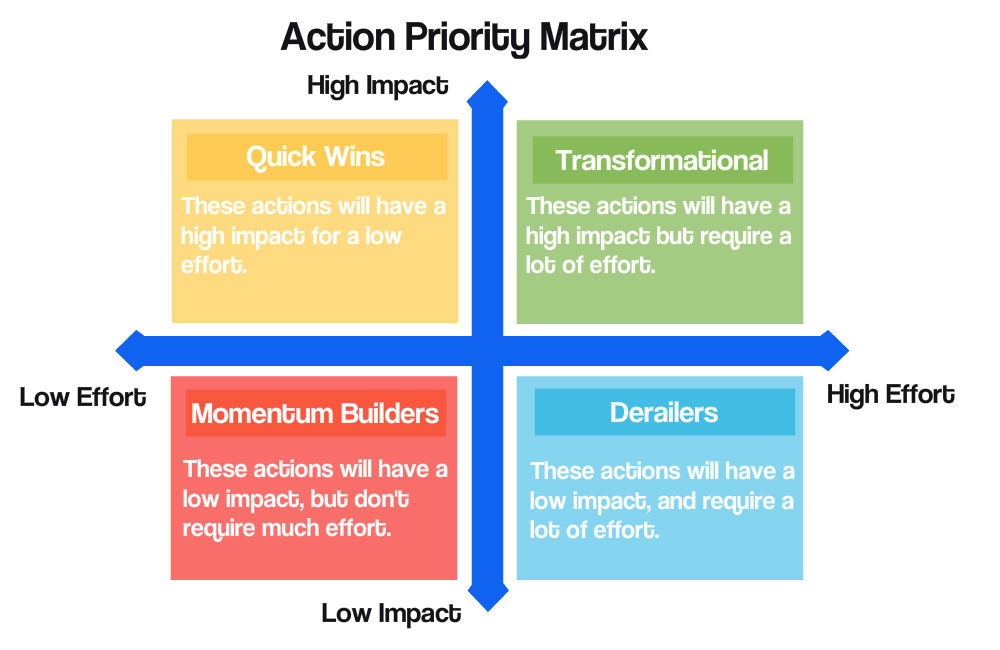 The key to success is a coordinated effort which uses several different channels. Internal social media platforms are good for day to day communications, as well as fostering an atmosphere of inclusion and cooperation. Then emails and standup meetings can be reserved for regular high-level updates.
The key to success is a coordinated effort which uses several different channels. Internal social media platforms are good for day to day communications, as well as fostering an atmosphere of inclusion and cooperation. Then emails and standup meetings can be reserved for regular high-level updates.
Ideally, you need a separate communication tool just for your internal team. Having a dedicated team chat app will make communication faster, more streamlined and more efficient. Moreover, modern team chat apps such as Chanty have a range of other features besides textual communication, including audio and video calls, screen sharing, project management features, as well as various useful integrations with other apps.
If you’d like to test out Chanty and see how it can improve your internal communication, you can give it a try, completely free.
Step 6: implement your communication plan
The implementation phase of your internal communication strategy is essentially a case of populating your publishing calendar. The content calendar will include all channels of communication, including content marketing on your blog, internal company emails, and more.
You should try to create an overview of the coming year. This will help you to identify how frequently you should use various channels.
Don’t spend a lot of time filling in the specifics of your content calendar too far into the future. Your content calendar should be adaptive, this way you can adapt it to incorporate things as they come up. When planning, make sure to assign responsibilities. Note down the channel, the message, the date it will go out, and who is responsible for completing the task.
Finally, communicate with clarity. Check your grammar, not just for propriety but for clarity.
Step 7: measure your progress
Now it’s time to return to our metrics for success. At least once a quarter you should evaluate the performance of your internal communication strategy and implement improvements where possible.
A review of your internal communication strategy should also incorporate employee feedback. This allows you to get insights from your target audience. An employee survey is a good way of doing this.
Your employee survey should include an overall rating of your communication efforts. It should also provide your colleagues with a chance to share their opinions on what is working and what is not. Without this feedback, it will be difficult to improve your internal communication.
Consider using analytics tools to monitor the reach and engagement of internal communications. Metrics such as email open rates, intranet activity or attendance at company meetings can help you assess whether your strategy is resonating with employees. The tools could be pulse surveys or engagement dashboards that provide real-time data and identify trends or potential problems early on.
Remember to analyze qualitative and quantitative data. While general views can be seen in employee surveys and numerical metrics, in-depth one-on-one interviews or small focus groups can bring out certain nuances. These may indicate what acts as a barrier to effective communication, like unclear messaging or a lack of accessibility for remote or multilingual employees.
Finally, set a benchmark to create year-over-year comparisons that will be useful. Having a culture of continuous improvement will make sure that, with time, your strategy will grow to fit changing business needs. Communicate back the results of such review processes to employees frequently; doing so also speaks to building trust in being transparent.
Conclusion
This guide aimed to provide you with a comprehensive framework for developing an internal communications strategy. In the seven steps listed above, we covered everything from how to review your current strategy through to how to set clear actionable goals that align with your business objectives.
The business benefits of a successful internal communications strategy will naturally result from this clear strategy. Through an open feedback loop, you can slowly improve your internal communication strategy that benefits your colleagues and the business.
Besides, a strong internal communication strategy does more than grease the wheels of everyday operations; it fosters community and alignment across the organization. When the lines of communication are clear, accessible, and engaging, employees feel more connected to the mission and values of the company. This can boost morale, but also increase productivity and retention rates.
This should be viewed as a living strategy that ebbs and flows with the constantly changing needs of your team, alongside ever-changing industry trends. Periodic review and refining the approach will ensure your organization prepares for any potentially difficult corners ahead in hybrid working environments or integrating new communications technologies. In so doing, you are being proactive, and responsive, and solidifying your organization’s culture with more connected team cohesion.
In all, internal communication is not a one-off project; rather, it is a growing and improving journey. Follow these steps and commit to ongoing evaluation for the setting up of your organization for long-term success.






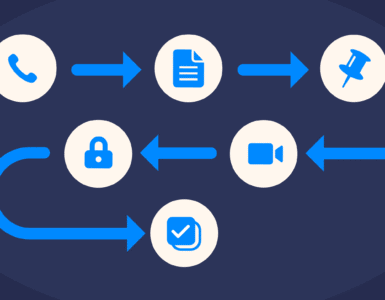


Add comment